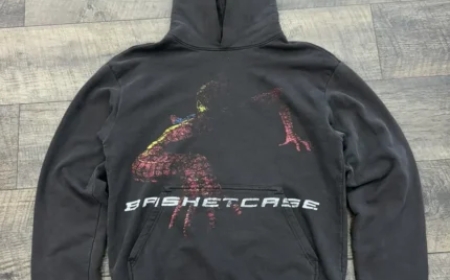How to Attend Wine Tasting Classes in Columbus
How to Attend Wine Tasting Classes in Columbus Columbus, Ohio, may not be the first city that comes to mind when thinking of wine culture, but beneath its Midwestern charm lies a thriving, sophisticated wine scene. From boutique vineyards and artisanal producers to renowned sommeliers and immersive tasting rooms, Columbus offers a rich, accessible, and deeply educational experience for wine enthus
How to Attend Wine Tasting Classes in Columbus
Columbus, Ohio, may not be the first city that comes to mind when thinking of wine culture, but beneath its Midwestern charm lies a thriving, sophisticated wine scene. From boutique vineyards and artisanal producers to renowned sommeliers and immersive tasting rooms, Columbus offers a rich, accessible, and deeply educational experience for wine enthusiasts of all levels. Attending wine tasting classes in Columbus is more than a social outing—it’s an opportunity to deepen your palate, understand the art of winemaking, and connect with a community that values craftsmanship and terroir. Whether you’re a complete beginner or a seasoned sipper looking to refine your knowledge, structured wine tasting classes provide the framework to explore grape varieties, regional styles, pairing principles, and sensory evaluation in a guided, meaningful way. This guide walks you through everything you need to know to confidently enroll in, prepare for, and maximize your experience in wine tasting classes across Columbus.
Step-by-Step Guide
Step 1: Define Your Goals and Skill Level
Before searching for classes, take a moment to reflect on why you want to attend. Are you looking to impress at dinner parties? Are you considering a career in hospitality or wine sales? Or do you simply enjoy the ritual of sipping and savoring? Your motivation will guide the type of class you choose. Beginners should look for introductory courses that cover the basics: how to hold a glass, identify aromas, distinguish between red and white wine profiles, and understand terms like “body,” “tannins,” and “acidity.” Intermediate learners might seek classes focused on specific regions—such as Bordeaux, Tuscany, or Oregon Pinot Noir—or those that delve into food and wine pairing. Advanced students may benefit from blind tasting workshops or certification prep courses aligned with organizations like the Court of Master Sommeliers or the Wine & Spirit Education Trust (WSET).
Step 2: Research Local Providers
Columbus is home to a diverse range of institutions offering wine education. Start by identifying the most reputable providers. Local wine shops with tasting rooms—such as Wine Library and The Wine Merchant—often host weekly or monthly classes. Restaurants with strong wine programs, like 1606 Kitchen or Barcelona Tapas, frequently offer curated tastings paired with small plates. Educational venues like The Ohio State University’s Continuing Education department occasionally partner with wine professionals to offer non-credit courses. Additionally, specialized organizations such as Columbus Wine Academy and Palate Experience focus exclusively on wine education and offer multi-week certification tracks. Use Google Maps and Yelp to read recent reviews, check class schedules, and note whether classes are held in-person, outdoors, or virtually.
Step 3: Evaluate Class Format and Duration
Wine tasting classes vary significantly in structure. Some are one-time events lasting 90 minutes, ideal for casual learners. Others are multi-session programs spanning four to eight weeks, designed for deeper immersion. Consider your time commitment. A one-night class might introduce you to five wines from Spain, while a six-week course could take you through the wine regions of France, complete with quizzes, tasting journals, and a final evaluation. Also, determine whether the class includes food pairings, which can enhance learning by illustrating how acidity, sweetness, and texture interact with cuisine. Some classes are seated and formal; others are casual, standing-room-only events with mingling. Choose a format that aligns with your comfort level and learning style.
Step 4: Check Pricing and Inclusions
Prices for wine tasting classes in Columbus range from $35 for a single session to $400+ for comprehensive certification prep. Understand exactly what’s included. Does the fee cover all wines tasted? Are snacks or a full meal provided? Is a tasting notebook, wine glass, or digital resource pack included? Some providers offer discounts for students, seniors, or group bookings. Be wary of hidden costs—such as mandatory tip jars or mandatory purchases of wines sampled. Reputable programs are transparent about pricing and deliver clear value. If a class seems too inexpensive, ask whether the wines are donated or if the experience is heavily sponsored by a single producer, which may limit educational breadth.
Step 5: Register and Confirm Details
Once you’ve selected a class, register through the provider’s official website or booking platform. Avoid third-party resellers unless they’re verified. During registration, you’ll typically be asked to provide dietary restrictions, contact information, and sometimes a brief wine background. After registering, you’ll receive a confirmation email with the exact location, start time, parking instructions, dress code, and what to bring. Many venues recommend arriving 10–15 minutes early to settle in and meet the instructor. If the class is held in a retail space, confirm whether you’ll be able to purchase wines tasted during the session—many offer exclusive discounts to attendees.
Step 6: Prepare Physically and Mentally
Wine tasting is a sensory experience that requires focus and clarity. On the day of your class, avoid heavy meals, strong perfumes, or smoking, as these can dull your sense of smell and taste. Hydrate well and get adequate sleep the night before. Bring a notebook and pen—many instructors encourage note-taking to track aromas, flavors, and impressions. Some attendees bring a small water bottle to cleanse their palate between samples. If you’re concerned about alcohol consumption, ask if the class offers non-alcoholic alternatives or spittoons (which are standard in professional tastings). Remember: you’re not expected to drink every sip. Spitting is not only acceptable—it’s encouraged to maintain sensory acuity throughout the session.
Step 7: Attend and Engage Actively
Arrive on time and introduce yourself to the instructor and fellow participants. During the class, ask questions—even if they seem basic. Instructors appreciate curiosity. Pay attention to how the wine looks (clarity, color intensity), smells (fruit, earth, oak, spice), and tastes (sweetness, acidity, tannin, finish). Don’t be afraid to describe what you perceive, even if it’s unconventional. There’s no “right” answer in tasting—only shared observations. Take notes on each wine: grape variety, region, vintage, aroma descriptors, and your personal rating. Engage in group discussions. Often, others will notice nuances you missed, deepening your understanding.
Step 8: Follow Up and Reflect
After the class, take 10–15 minutes to review your notes. What surprised you? Which wine stood out, and why? Did you discover a new favorite grape or region? Many providers send follow-up emails with a list of wines tasted, recommended reading, or links to purchase. Use this as a springboard. Try to find one of the wines at your local retailer and taste it again on your own. Consider joining a wine club or starting a small tasting group with classmates. Reflection turns a one-time experience into lasting knowledge.
Best Practices
Practice the Sight-Smell-Taste Method
Every professional sommelier uses a systematic approach: look, smell, taste, conclude. Apply this in every class. First, hold the glass against a white background to assess color and viscosity. Swirl gently to release aromas. Take a short, sharp sniff—don’t inhale deeply, as this can overwhelm your senses. Then take a small sip, let it coat your mouth, and breathe through your nose to amplify flavor. Note the texture (creamy, crisp, oily), the length of the finish, and any evolving flavors. This method trains your brain to decode wine systematically rather than relying on gut reactions.
Keep a Tasting Journal
One of the most effective tools for growth is a personal tasting journal. Record the date, venue, wine name, grape, region, price, and your impressions using simple descriptors: “black cherry,” “wet stone,” “green pepper,” “long finish.” Over time, you’ll notice patterns—perhaps you consistently enjoy wines with high acidity or those aged in French oak. Your journal becomes a personalized map of your palate, helping you make better wine choices in the future.
Focus on Context, Not Just Flavor
Wine is not just a beverage—it’s a product of climate, soil, tradition, and human labor. Learn the “why” behind what you taste. Why does a Chardonnay from Burgundy taste mineral and lean, while one from California is buttery and ripe? Understanding climate zones, winemaking techniques (e.g., malolactic fermentation, barrel aging), and appellation rules transforms tasting from a passive activity into an intellectual journey. Many Columbus classes include short lectures on geography and history—pay close attention.
Limit Alcohol Intake
Even if you’re a regular drinker, tasting multiple wines in one session can lead to sensory fatigue or over-intoxication. Use spittoons liberally. Drink water between samples. Avoid mixing wine with other alcohol during the class. Your goal is to evaluate, not to get drunk. Many experienced tasters consume less than one full glass over the course of a multi-wine session.
Engage with the Community
Columbus has a growing network of wine lovers. Connect with classmates on social media or through local Facebook groups like “Columbus Wine Enthusiasts.” Attend post-class meetups, wine dinners, or vineyard trips organized by your class provider. Community engagement turns solitary learning into a shared passion, making your journey more enjoyable and sustainable.
Be Open-Minded and Avoid Prejudices
Don’t dismiss a wine because it’s from an unfamiliar region or labeled “organic” or “natural.” Some of the most memorable experiences come from wines you initially expected to dislike. A Spanish Garnacha might surprise you with its bright red fruit and peppery finish. A lesser-known Ohio hybrid might reveal surprising complexity. Approach each glass with curiosity, not expectation.
Pair Learning with Real-World Application
After each class, visit a local wine shop and ask for a bottle similar to one you tasted. Or order a wine by the glass at a restaurant and try to identify the characteristics you learned. Apply your knowledge in real settings. This reinforces memory and builds confidence. Over time, you’ll find yourself recommending wines to friends with authority and insight.
Tools and Resources
Recommended Apps
Several mobile applications enhance the wine tasting experience. Wine-Searcher helps you locate and compare prices for wines you’ve tasted. Decanter’s Wine App offers detailed profiles, vintage charts, and expert ratings. CellarTracker allows you to log your personal collection and share tasting notes with a global community. For beginners, Wine Folly offers beautifully illustrated guides to grape varieties and regions, available as a free app and print book.
Essential Reading
Build foundational knowledge with these books:
- Wine Folly: The Essential Guide to Wine by Madeline Puckette – visually engaging and perfect for beginners.
- The Wine Bible by Karen MacNeil – comprehensive, authoritative, and rich in regional detail.
- Understanding Wine Technology by David Bird – for those interested in the science behind winemaking.
- On Wine by David Schildknecht – essays on terroir and philosophy, ideal for advanced learners.
Local Retailers and Resources
Support local businesses that offer educational content:
- Wine Library – Offers weekly tastings, pairing nights, and beginner workshops.
- The Wine Merchant – Hosts monthly themed tastings with visiting winemakers.
- Barrelhouse Wine Bar – Features rotating educational events and sommelier-led flights.
- Columbus Wine Academy – Provides structured WSET Level 1 and Level 2 courses.
- Ohio Wine Producers Association – Organizes annual tours of Ohio vineyards and educational seminars.
Online Platforms and Virtual Options
If in-person classes are inconvenient, many Columbus providers offer hybrid or fully virtual options. Platforms like Zoom allow you to join live tastings from home. Some classes ship a curated selection of wines to your door in advance. Look for providers like Palate Experience or Wine Club Columbus, which specialize in remote learning with tasting kits. These are excellent for busy professionals or those in surrounding suburbs.
Free Resources
Take advantage of free educational content:
- YouTube Channels: “Wine 101” by Wine Folly, “The Wine Teacher” by Dr. Jamie Goode.
- Podcasts: “The Wine Cast,” “Wine for Normal People,” “VinePair Wine Talk.”
- Websites: Wine Spectator’s Education Section, Decanter Academy’s free articles.
Real Examples
Example 1: Sarah’s Journey from Novice to Certified
Sarah, a 32-year-old marketing professional, had never attended a wine class before. She signed up for a $45 “Wine 101: The Basics” session at Wine Library after seeing a flyer on Instagram. She learned how to swirl, sniff, and identify citrus versus stone fruit in whites. She was surprised to discover she preferred Pinot Noir over Cabernet Sauvignon. Inspired, she enrolled in the eight-week WSET Level 1 course offered by Columbus Wine Academy. Over the course of two months, she studied grape varieties, learned to read wine labels, and passed the final exam with distinction. Today, she hosts monthly “Wine & Whine” nights at her apartment, using her journal to guide selections. She recently applied for a part-time position at a local wine shop, citing her certification as a key qualification.
Example 2: The Corporate Team Building Tasting
A team of 12 employees from a downtown tech firm wanted to build camaraderie outside the office. They booked a private “Global Wine Tour” class at Barrelhouse Wine Bar. The instructor led them through six wines from six continents, including a surprising bottle from India. Each team member took turns describing what they tasted, leading to laughter, debate, and unexpected connections. The event ended with a collaborative food pairing challenge: “Match this Malbec with one of our lunch menu items.” The team loved the experience so much they now host quarterly tastings, rotating locations across Columbus.
Example 3: Retiree Discovers a New Passion
After retiring, James, 68, found himself with more free time and less direction. He stumbled upon a “Sunday Sip & Learn” class at The Wine Merchant, advertised in the local community newsletter. He attended a session on Italian wines and fell in love with the structure of Barolo and the bright acidity of Soave. He began attending every class, taking detailed notes, and eventually joined a monthly tasting group organized by the shop. He now volunteers to help organize their annual “Wine & Winter Lights” event. “I didn’t know wine could be this fascinating,” he says. “It’s given me a new community and a daily curiosity.”
Example 4: The Ohio Wine Enthusiast
Alice, a lifelong Ohio resident, assumed her state didn’t produce quality wine. She signed up for a “Ohio Vintages” tasting hosted by the Ohio Wine Producers Association. She sampled 10 wines made from native and hybrid grapes—Fruitland, Vidal Blanc, Marquette—and was stunned by the complexity. One red blend, made from Marquette grapes grown in the Lake Erie region, had notes of blackberry, smoke, and dark chocolate. She bought a case, joined the association’s newsletter, and now volunteers at local vineyard open houses. “I thought I knew wine,” she says. “Turns out, I just didn’t know Ohio wine.”
FAQs
Do I need any prior knowledge to attend a wine tasting class in Columbus?
No. Most introductory classes are designed for absolute beginners. Instructors assume no prior experience and will explain terminology, techniques, and background as they go. Curiosity and an open mind are the only prerequisites.
Are wine tasting classes expensive in Columbus?
Prices vary widely. A single tasting event can cost as little as $25–$45, while multi-week certification courses range from $200 to $500. Many providers offer early-bird discounts, group rates, or payment plans. Consider the value: you’re paying for curated wines, expert instruction, and a structured learning experience—not just drinks.
Can I attend if I don’t drink alcohol?
Yes. Many venues offer non-alcoholic alternatives such as grape juice, sparkling water, or mocktail pairings. Inform the provider in advance so they can accommodate your needs. You can still fully engage in the sensory analysis without consuming alcohol.
How long do wine tasting classes typically last?
Most classes run between 90 minutes and 3 hours. One-time events are usually 2 hours. Multi-week courses meet weekly for 1.5–2 hours over 4–8 weeks. Always check the schedule before registering.
Should I tip the instructor?
Tipping is not expected, but appreciated if the experience exceeded expectations. Many instructors are paid a salary or honorarium by the venue. If you feel moved to show appreciation, a thoughtful thank-you note or a small gift (like a bottle of olive oil or local honey) is more meaningful than cash.
Can I bring a friend or partner?
Yes—most classes allow guests, though you must register them separately. Some events have limited seating, so book early if you plan to attend with someone. Private group bookings are also available for larger parties.
What should I wear to a wine tasting class?
There’s no strict dress code, but most venues are casual to smart-casual. Avoid heavy perfumes, colognes, or scented lotions that can interfere with aroma detection. Comfortable shoes are recommended, especially if you’ll be standing or moving between stations.
Will I get to take home the wines I taste?
Typically, no—but many venues offer exclusive discounts to attendees. You’ll often receive a list of wines tasted with purchasing links or in-store codes. Some classes even include a complimentary bottle as part of the fee.
Are wine tasting classes only for adults?
Yes. All wine tasting classes in Columbus require participants to be 21 or older due to alcohol regulations. ID may be checked at entry.
How do I know if a class is high-quality?
Look for instructors with certifications (WSET, CMS, CWS), detailed course outlines, and positive reviews mentioning specific takeaways. Avoid classes that feel like sales pitches or focus only on one brand. High-quality education emphasizes exploration, not promotion.
Conclusion
Attending wine tasting classes in Columbus is more than a way to sample new wines—it’s a gateway to a deeper appreciation of culture, geography, craftsmanship, and community. Whether you’re drawn to the elegance of a Burgundy Pinot Noir, the boldness of an Ohio Marquette, or the art of pairing cheese with a crisp Riesling, structured education transforms casual sipping into informed enjoyment. By following this guide—from choosing the right class to keeping a tasting journal—you equip yourself with the tools to navigate Columbus’s vibrant wine landscape with confidence and curiosity. The journey doesn’t end when the class does; it begins. Each bottle you open afterward becomes an opportunity to recall what you’ve learned, to ask new questions, and to share your discoveries with others. In Columbus, where tradition meets innovation, wine isn’t just a drink—it’s a conversation waiting to happen. Start yours today.


































